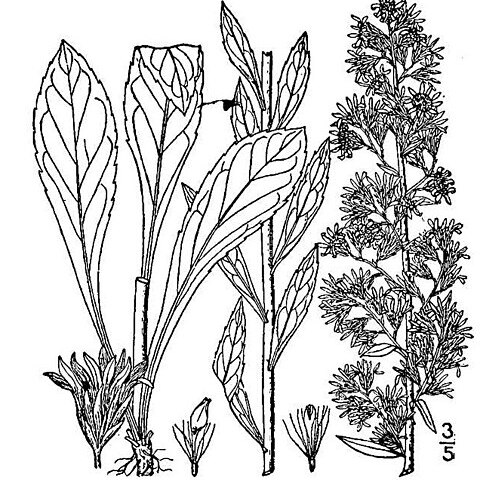Plants 20–100 cm; caudices branched, woody. Stems 1–5+, erect, puberulent. Leaves: basal and proximal cauline tapering to long petioles, blades oblanceolate to obovate, 50–150 × 10–50 mm, margins serrate, apices acute, faces puberulent; mid to distal cauline sessile, blades lanceolate to linear-elliptic, 10–50 × 3–10 mm, reduced distally, margins becoming entire , apices acute. Heads 15–250 , not secund, in elongate, paniculiform arrays, lateral racemiform clusters short and ascending, sometimes lateral branches elongated and sharply ascending. Peduncles 1.5–3 mm. Involucres campanulate, 3–5 mm. Phyllaries in 3–4 series, appressed, unequal, linear, attenuate, puberulent. Ray florets 9–16 (orange-yellow); laminae 3.5–4.2 × 0.4–0.6 mm. Disc florets (6–)10–15; corollas 2.8–3 mm, lobes 0.5–0.8 mm. Cypselae 0.8–1.3 mm, glabrous or sparsely strigose; pappi 2.2–2.6 mm.

